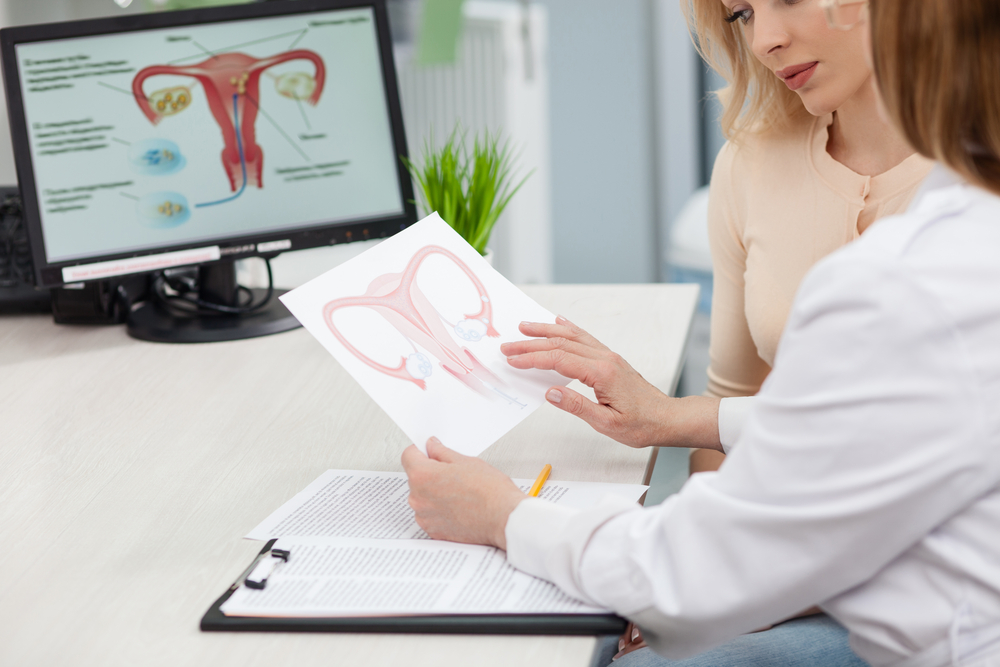Second only to cesarean section, hysterectomies are one of the most commonly performed surgeries on women — more than a half a million each year. This operation is done to remove all or part of the uterus, sometimes the cervix, and the ovaries. In certain cases, a hysterectomy is warranted – to save lives, to alleviate serious problems, to correct things impairing normal functioning and of course to improve the quality of life.
But there are several reasons I don’t recommend this course of action unless absolutely medically necessary. First of all, a woman’s reproductive system is central to the core of her, representing her femininity from puberty, through childbearing years, and even beyond menopause. Losing this aspect of womanhood, even symbolically, can leave emotional scars. While healing is possible on every level – both physically and emotionally – it can be traumatizing to lose fundamental organs.
Removing the uterus and other reproductive organs also poses physical risks and has consequential side effects, including and not limited to: bleeding and infection, damage to nearby tissue, hormone changes, symptoms of menopause, bladder and intestinal changes. Like with any other major surgery, a hysterectomy can have repercussions.
Surgical treatment may relieve much of the discomfort associated with uterine problems – bleeding, pain, bloating, and malaise — but I always try to first suggest the most minimally invasive procedures, utilizing medical management and natural treatments when possible, and often can obtain quite positive results.
Let’s examine the issues that contribute to surgical intervention, and some less invasive alternatives.
Menorrhagia (or heavy bleeding)
Menorrhagia is a common complaint for women, frequently prompting physicians to quickly consider a hysterectomy. But what constitutes heavy menstrual bleeding for one woman may not mean the same thing to another. In traditional medical practice the common phrase, “dysfunctional uterine bleeding,” is used to describe unusually heavy menstrual flow, as well as abnormal incidents of bleeding or spotting (such as between periods), after intercourse, after menopause, longer than a period, or heavier than a normal period. When a woman experiences atypical or excessive amounts of bleeding, we evaluate what may be causing it – physiologically, systemically, and even emotionally. Here are some common causes of menorrhagia and other uterine conditions:
- Uterine fibroids – noncancerous tumors in the uterus.
- Polyps – small, noncancerous growths on the lining of the uterine wall.
- Hormonal imbalance – causing excessive build up of the lining of the uterus.
- Ovarian dysfunction – leading to hormonal imbalance.
- Complications from pregnancy – miscarriage or ectopic pregnancy, when an egg implants in the fallopian tube instead of the uterus.
- Intrauterine device (IUD) – this form of birth control may cause heavy bleeding.
- Perimenopause – the transitional hormonal state leading up to menopause.
- Endometriosis – growth of the tissue normally inside the uterus which grows outside of the uterus.
- Adenomyosis – when endometrial glands from the endometrium embed in the uterine muscle. Endometriosis that is in the muscle of the uterus.
- Cancer – it is rare that uterine, cervical or ovarian cancer cause heavy bleeding.
- Medications – some medications can contribute to prolonged menstrual bleeding.
- Certain medical conditions – some diseases such as endometriosis, pelvic inflammatory disease, thyroid problems, lupus, and others can contribute to menorrhagia.
When abnormal pathology is ruled out, then we take a look at lifestyle and environmental factors that may be contributing to hormonal imbalance and menorrhagia. The state of hormones throughout a woman’s cycle is like a delicate dance, and sometimes messages between hormones and body parts can be jumbled. These “mixed messages,” can influence their functioning, causing abnormal bleeding. Before jumping right to surgery, we try to restore hormonal balance naturally, sometimes through use of bioidentical progesterone, natural supplements, and lifestyle changes including decreasing stress and enhancing nutrition. By taking things a step at a time, with patience and respect for our body’s natural requirements and rhythms, we may be able to avoid surgical intervention.
Endometrial ablation
An endometrial ablation is one option for the treatment of abnormal uterine bleeding when hormonal therapies have failed. This is a procedure to remove the lining of the uterus, or endometrium. It is less invasive than a hysterectomy, and allows a woman to keep her uterus. Ablation means “to remove by erosion, melting, evaporation, or vaporization.” Endometrial ablation is done with a hysteroscope, along with a device that heats, freezes, or lasers the endometrial lining. This destroys a layer of the lining, and will usually completely stop monthly periods. Ablation may also be useful for examining select areas of the endometrial lining when other techniques, such as biopsy, may not be adequate.
This procedure is performed by a trained gynecologist (GYN) on an outpatient basis, or even in the office. It is fairly straightforward, with a manageable recovery. In certain circumstances, such as re-growth of the lining, a second ablation needs to be done. However, recent advances in the technology and devices used to perform ablations have decreased the incidence of repeat procedures.
Although endometrial ablation does work well for many women, it also eliminates the ability to carry a successful pregnancy. In fact, post-ablation pregnancies can be risky, so birth control is an important consideration. There is also a risk that endometrial ablation might mask endometrial cancer later in life, because it removes any spotting that would signal something abnormal going on in the uterus.
Other procedures
When uterine conditions require treatment beyond non-invasive methods such as hormone therapy, nutritional supplements or lifestyle remedies, certain other procedures can be performed prior to having a hysterectomy.
- Hysteroscopy: a thin, lighted tube is inserted through the vagina into the uterus, allowing a view of the cervix and uterus. Hysteroscopy can be diagnostic or operative. During an operative procedure, small instruments are inserted through the hysteroscope to treat certain conditions such as fibroid tumors.
- Myomectomy: an instrument is inserted through the vagina or abdomen to remove fibroid tumors. Depending on the size, location, and number of fibroids, myomectomy can be performed via hysteroscopy (vaginally), laparoscopically (through a small scope inserted into the abdominal cavity), or abdominally (a considerable medical procedure).
- Uterine artery embolization (UAE): a catheter is threaded into the uterine artery to inject tiny particles which cut off blood supply to fibroid tumors. It is performed by an interventional radiologist, who specializes in treating internal conditions without making a surgical incision.
Choosing the best option
The decision to have a hysterectomy is complex, personal, and may seem intimidating. Although we have come a long way, there are still limitations with these types of procedures. With time we can look forward to medical technology bringing us more advanced treatment alternatives to hysterectomy. But until then, these techniques do offer women and their healthcare practitioners some useful options. In addition, exploring alternative treatments with fewer side effects can make a difference in the long-term outcome of your health.
Discussing all of the options with your healthcare provider and asking plenty of questions can help you better understand what is going on with your body. When I sit down with a woman considering these options, I encourage her to look inside herself, try help her have peace of mind, and make the right decision for her own well-being.
For more information, please see our articles on menorrhagia, menstruation, and hysterectomy.







